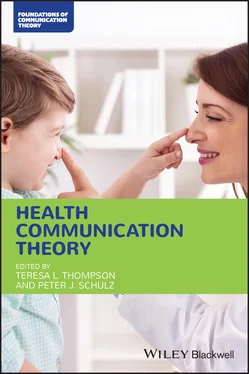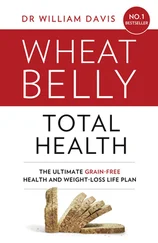If a study on diabetes management is grounded in a perspective such as the theory of reasoned action, findings from that study will provide insights that scholars may apply to other health problems and contexts. Although generalizability is partially based on sampling, design issues, and ecological validity concerns, it is also based on theoretical framing. Through the theoretical grounding of a study the broader base of knowledge is extended. This is the goal of scholarship. This is how a body of knowledge is built.
One of the more interesting examples of theory being extended into new areas of study is cybersecurity. If imitation is the sincerest form of flattery, theories of health and health communication should at least blush occasionally. Several theories discussed within this volume have gained theoretical traction in research on computer security.
Scholars studying how to motivate end users to engage in safe computer practices use the health belief model (Rosenstock 1974), the protection motivation theory (Rogers 1975), and the transtheoretical model (Prochaska and DiClemente 1983) to guide their research.
For example, Ng et al. (2009) found that perceptions of susceptibility, benefits, and feelings of self‐efficacy were the best predictors of opening email attachments. The analogue of “don’t click on links or open unexpected email attachments” in the realm of health is “maintain social distance and wash your hands.” Viruses move through contact and malware moves through virtual contact or email.
Recently researchers from Carnegie Mellon (Faklaris, Dabbish, and Hong 2018) recognized the value of the transtheoretical model for designing security interventions. Their recommendations acknowledge that, just like the public in a general health information campaign, end users are not equally accepting or ready for making changes to their behavior. By targeting messages based on users’ current readiness or stage of change, cybersecurity professionals may increase the effectiveness of their campaigns and training materials. Also important, developing targeted messages may help reduce the feelings of cyber‐fatigue that are now recognized as the bane of security training efforts.
Training programs for avoiding phishing attacks and ransomware attacks require different lists of rules. It is no wonder that end users receiving information not targeted to their readiness produce fatalistic attitudes about cybersecurity training.
Fortunately, health communication theory has come to the rescue here, too. Recent research by Zhang and Borden (2019) employed the extended parallel processing model (Witte 1994) and found fear and anxiety mediated end‐user behavior. Specifically, negative emotions were shown to influence the impact of threat on end‐user intentions to comply and seek additional information. Efforts to motivate end‐user cybersecurity behavior need to consider the role self‐efficacy plays in the process. It remains to be seen how effective these theories will be, but it is clear scholars from other disciplines are looking to health and health communication for theoretical models. The next section of this chapter focuses on the different types of theories. The breadth and depth of these theoretical traditions have certainly helped us grow the discipline.
Traditions of Health Communication Theory
Much has been written about communication theory as an area of study over the last several decades. Perhaps the most frequently cited and well‐known work on communication theory was published by Robert Craig (1999) in the journal Communication Theory . Among the many important points made by Craig is an insightful discussion of the multiple disciplines from which communication theory has developed. These varying disciplinary roots have led to rather different conceptualizations of the nature of theory and its application in the broad field of communication. Craig notes that acknowledging these differing roots is more fruitful than arguing about the validity of varying theoretical approaches. Craig identifies seven traditions of communication theory. His discussion has become foundational to our understanding of theory in the field of communication.
Building on this work, Babrow and Mattson (2003, 2011) identify how these traditions apply to health communication scholarship. They trace the following lines of research and knowledge in this discussion: (i) rhetorical (“the practical art of persuasive discourse”, Babrow and Mattson 2011, p. 25); (ii) semiotic (“intersubjective mediation by signs and sign systems”, p. 26); (iii) phenomenological (“communication as dialogue or experience of otherness”, p. 26); (iv) cybernetic (“information processing by which systems are able to function”, p. 27); (v) sociopsychological (a focus on behavior expressing psychological systems, states, and traits producing a variety of effects); (vi) sociocultural (symbolic processes producing and reproducing sociocultural patterns that are shared within a group); and (vii) critical traditions (which focus on “material practices and hegemonic ideologies that distort communication” p. 29). More of the theories to be discussed in the remainder of this volume focus upon sociopsychological and sociocultural traditions than on the other traditions (for exceptions see Ho and Sharf, Chapter 14in this volume). Understanding the conceptualization of communication and theory on which a particular theory is based is important in order to adequately assess the value of that theory and research.
Generative Tensions in Health Communication
Understanding theory in health communication is also directly related to comprehension of the “generative tensions” underlying the study of health communication (Babrow and Mattson 2011, p. 19). One of these tensions focuses upon the interplay of the body and communication that is inherent in the biopsychosocial turn that has been key to changes in views of medicine in the last few decades. The guiding principles after the turn are: Disease shapes communication. Communication shapes disease and other aspects of health. Social and cultural factors influence all aspects of health communication. How disease is defined and the manner in which we communicate about it determine how it is treated.
A second generative tension is related to this – the opposition between science and humanism. Contrasts between the potentialities of science vs the actualization of being human epitomize this. Babrow and Mattson (2011) exemplify this tension through a discussion of death and dying. The contemporary fear of mortality is but one factor that captures and typifies this tension.
The strain between idiosyncrasy and communality characterizes the third generative tension that they identify. The contrast between ontological and holistic views of medicine makes this apparent. Finally, the experience of uncertainty and values are central to the fourth generative tension described by Babrow and Mattson (2011). This tension will be most apparent in the chapter written by Babrow, Matthias, Parsloe, and Stone ( Chapter 13in this volume), which focuses on uncertainty management theories.
Many of the theories that are commonly used in health communication scholarship are applied across contexts and areas of health communication study. Dividing these theories into chapters is somewhat arbitrary, but it was necessary to do so in some manner in order to make the presentation of the theories manageable. We looked in part at the origins of various theories to shape the various chapters. All theories in the book are applied to the field of health communication but might originate elsewhere. Four origins can be distinguished: (i) theories developed in the field of health communication proper, (ii) theories developed in the context of health in general (and then specified or made useful in the more narrow area of health communication), (iii) theories developed in communication (and then also specified to health communication), and (iv) theories of provenance from fields beyond health or communication , but which are nevertheless applied in health communication. The book begins with an overview in Part Iand then moves to narrower interpersonal contexts. We broaden the context from there.
Читать дальше












